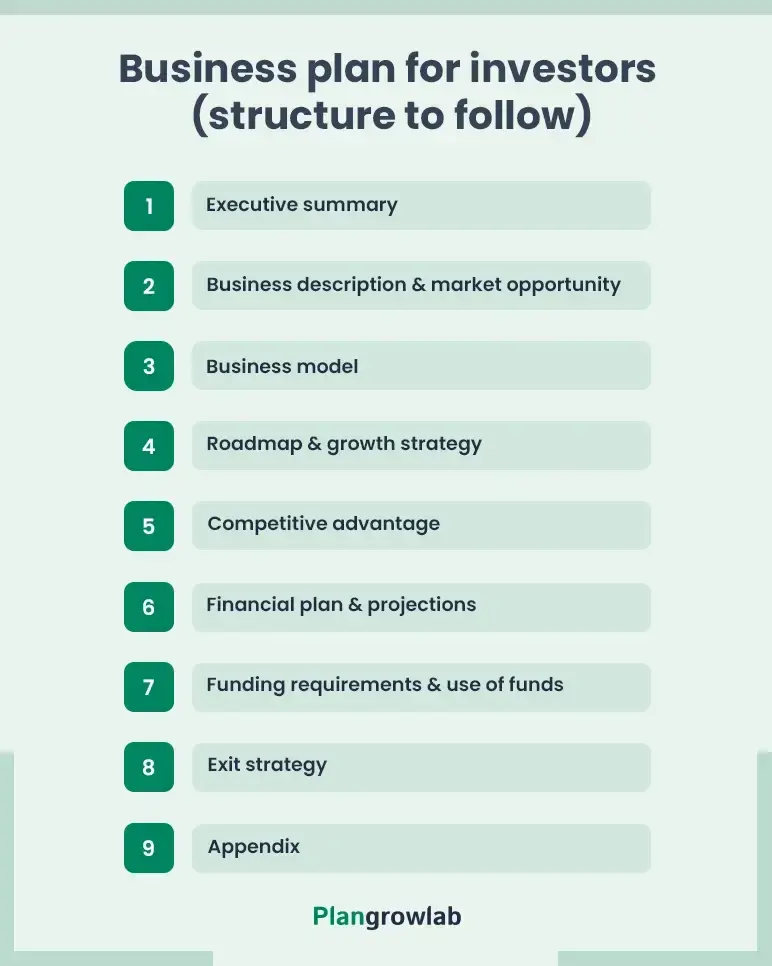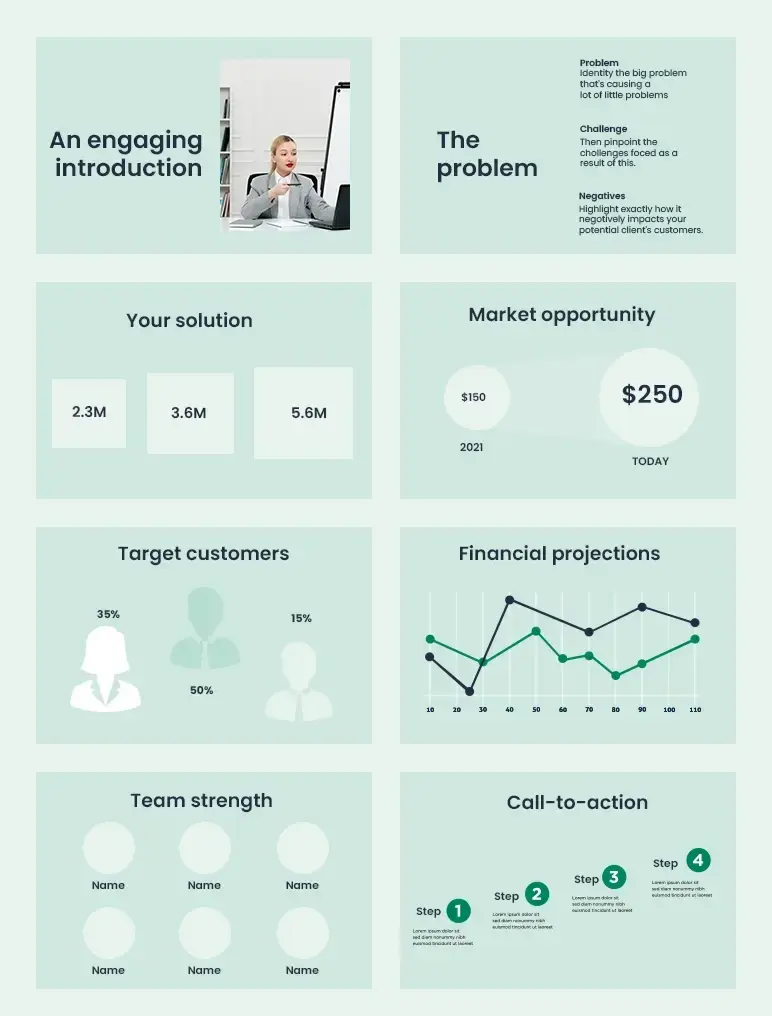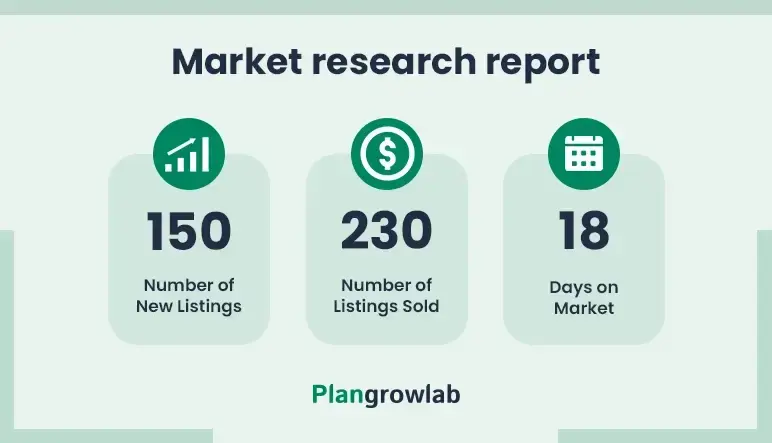"Do investors even care about business plans anymore?" 🤔
We get this question at least once a week from our clients.
Here's what we've learned after years of working with entrepreneurs: Yes, investors absolutely care, but not how most of you think.
Almost every time, founders fill their business plan with numbers, slides, and careful formatting, thinking that’s what investors want to see.
And on the surface, it is.
But, in our experience helping founders prepare for investor meetings, three things consistently move the needle:
- Clear strategy: Can you explain how you'll win without industry jargon?
- Solid model: Do you understand how your business makes money?
- Credible numbers: Are your projections built on real assumptions?
That’s exactly what this blog is about. Let’s dive in and explore a business plan for investors in detail.
Fact: Investors still care about the business plan
Despite what you might hear at networking events or read in startup blogs, the business plan isn't dead. We've sat through enough investor meetings to know this firsthand.
There's a wrong narrative floating around that investors have moved beyond business plans—that they only care about demos, traction metrics, or 10-slide pitch decks.
This misconception is costing founders real opportunities.
Here's what actually happens: Investors use your business plan to validate what they heard in your pitch.
When a founder claims they can hit $10M ARR in three years, investors flip to the financial model to see if the math works. When someone talks about market opportunity, they check if the competitive analysis shows real understanding.
Your pitch deck gets you in the room, but your business plan determines the check size. We've watched investors reference specific sections during term sheet negotiations, use financial models to stress-test growth assumptions, and dig into operational details that reveal whether you can actually execute.
The founders who understand this who treat their business plan as their credibility backbone consistently outperform those who focus solely on pitch perfection.
When an investor asks "How did you calculate customer acquisition costs?" or "What happens to margins if you scale?"—your business plan better have those answers locked and loaded.
Business plan for investors (structure to follow)
Forget the 50-page plan. This is the structure we use when we want investors to keep flipping the doc.

1) Executive summary
Even though the executive summary is the first section of your business plan, it's usually written last. It's a concise overview of your business, covering what you do, your target market, revenue model, and funding needs. Investors often read this first, so make it strong.
2) Business description & market opportunity
Explain what your business does and why it matters. Show that you understand the market size, trends, and competition. Also, make them aware that you’ve done market analysis and have data-driven insights to back up your claims. Investors want to see if there's real demand for your product or service.
3) Business model
How do you make money? Investors need to know exactly how revenue flows in, what your pricing strategy is, and how scalable your business is. A weak business model is a deal-breaker.
4) Roadmap & growth strategy
Investors don't just want to see where you are today; they want to know where you're headed. Lay out your short-term and long-term goals, milestones, and expansion plans. A clear roadmap shows them you have a vision beyond just launching.
5) Competitive advantage
What makes you different? Whether it's unique technology, branding, partnerships, or a cost advantage—you need a strong reason why customers will choose you over competitors.
6) Financial plan & projections
This is the most critical part. Investors care about numbers. Provide realistic revenue projections, expected costs, profit margins, and cash flow. A well-structured financial model tells a better story than words can.
7) Funding requirements & use of funds
Clearly outline the amount of investment you need and provide a breakdown of how you'll allocate the funds. You can specify portions for inventory, raw materials, marketing strategy, operational costs, salaries, and other essential expenses. Investors want to be assured that their money is being used strategically to fuel growth—not wasted on non-essential spending.
8) Exit strategy
Investors don't just want to put money in; they want to know how and when they'll get their return. Whether it's an acquisition, IPO, or buyback plan—this section gives them confidence in your long-term vision.9
9) Appendix
The appendix isn't mandatory, but you add extra documents like detailed financial tables, product blueprints, legal agreements, or market research reports that investors might want to review.
Now, we’ve cleared how to create a business plan for investors. Now, let's explore what investors actually need in a business plan.
What investors actually look for in a business plan
Founders think investors want a perfect, risk-free plan that guarantees returns.
That's not reality.
From our years of working with both sides, we've learned that investors know every business plan is built on assumptions. They're not looking for certainty. They're looking for thoughtful uncertainty.
What they really want to understand is whether you've done the hard work of thinking through your business systematically.
When investors spend hours dissecting your business plan, they're conducting a mental audit of how you approach problems, make decisions, and handle complexity.
We've seen this pattern repeatedly: The founders who get funded aren't necessarily those with the most polished plans. They're the ones who demonstrate the clearest thinking under uncertainty.
Beyond the standard sections, investors are scanning for three critical elements:
- Evidence of iteration: Have you tested assumptions and adapted based on what you learned?
- Resource awareness: Do you understand what it actually takes to build this business?
- Risk acknowledgment: Can you identify potential problems before they become fatal?
Your numbers are important because they show whether you understand the mechanics of your business model and can make informed decisions as conditions change.
Here's what truly separates funded founders from the rest…
1) A business model that makes sense
If investors can’t follow how the business makes money, they stop reading. Your plan should clearly walk through:
- Where the money comes from: Your revenue streams, target market, pricing, and customer segment
- How you reach people: Your acquisition strategy and main channels
- What scaling looks like: How growth affects costs and operations
In every investor meeting we’ve supported, the standout plans are never the flashiest; they’re the most straightforward.
2) Market opportunity backed by real data
It’s important to understand that writing a business plan is not just about sharing an idea on a paper but rather it’s about your research, analysis, and proof behind it. Investors want proof that there’s a real demand for your product or service. This means:
- Accurate market size and growth trends (not just estimates)
- Competitor analysis that shows why your business is different
- Customer insights—who they are, what they need, and how you solve their problem
Numbers speak louder than words—your market research should be data-driven, not vague claims.
3) Financials that show profit potential
Investors don’t fund uncertainty. Your financial projections should:
- Show a clear path to profitability
- Be realistic, not inflated
- Highlight key metrics that include revenue, margins, burn rate, break-even point
4) A smart use of investment funds
How you spend investment money is just as important as how much you ask for. Investors look for:
- A clear breakdown of how the funds will be used
- Spending that drives growth, not just cover expenses
- A well-structured funding plan that matches your business milestones
5) A team that can execute
An average idea with a strong team can succeed. A great idea with a weak team will fail. Investors want to know:
- Who’s running the business and why they’re the right people for it
- What skills and experience does your leadership team member bring
- If there are gaps, how do you plan to fill them (advisors, hires, partnerships)
They invest in people just as much as ideas. Show them you’re the right team to make it happen.
Business documents investors want to see (But, might not ask for)
When you present a business plan to investors, they may not directly request certain documents, but having them ready shows professionalism, preparation, and credibility. These documents provide deeper insights into your business beyond just the business plan.
Cover letter
Think of this cover letter as a reflection of your professionalism. Imagine walking into a meeting with an investor and jumping straight to asking for money—how would that come across? Not great, right?
That’s exactly why a cover letter is important. It’s the first thing an investor sees before they even open your business plan. It sets the tone and builds credibility.
A strong cover letter includes:
- Your company name, business type, and address
- The investor’s name and details
- A brief introduction to what your business does and why it matters
- A clear mention of how much investment you need and for how long
Here’s a cover letter example I came across and wanted to share with you.

Pitch deck

A pitch deck is a concise, visually engaging slideshow that presents your business idea in a way that’s easy to grasp. Investors often skim a pitch deck before reading a business plan. A well-structured deck helps them understand your business quickly and decide if they want to learn more.
A pitch deck slides include:
- An engaging introduction
- The problem
- Your solution
- Market opportunity
- Target customers
- Financial projections
- Team strength
- Call-to-action
Financial model
Once you have covered the basics of finance, investors will want to take a deeper look into it. They need to understand how your business is making and spending money.
To give them a clear picture, be fully transparent with these key financial documents:
- Income statement
- Profit and loss statement
- Cash flow statement
Further, investors appreciate details. Hence, go beyond the basics and break down spending by department—sales and marketing, industry analysis, research and development, and general operations.
This helps them see exactly where their money would go, how your business is structured, and how you plan to grow.
Investment term sheet
It’s a core document for an investor meeting. It outlines the terms of the investment, including the amount of equity you’re offering and the investor’s role.
Investors want clarity on how much ownership they’ll get, what rights they’ll have, and their expected returns. Having a term sheet ready signals that you understand the investment process.
Here’s what an investment term sheet should include:
- Investment amount
- Equity offer
- Valuation
- Exit strategy
- Key partnerships
Market research report

A report that proves you understand your industry, competition, and customers. This document makes sure that your data are real, not guesses. A strong market analysis shows them that you’ve done your homework and your business has real demand.
Include documents like:
- Target customer demographics
- Competitor analysis
- Industry trend
A million-dollar question: How long should your plan be
There’s no “right” number of pages. We’ve worked with founders who wrote 10 pages and got funded. Others needed 30.
The key is matching your depth to the reader. Here’s a quick look at what each investor type expects:
| Investor Type | Ideal Length | Why? |
|---|---|---|
| Venture Capitalists (VCs) | 12-15 pages | They skim through plans quickly, so keep them concise with a strong financial model and growth strategy. |
| Banks & Formal Lenders | 25-30 pages | They need in-depth financials, risk analysis, and repayment plans before approving loans. |
| Angel Investors | 10-20 pages | They look for passion and scalability but still want solid numbers to back up your idea. |
We can help with your business plan
Writing a business plan isn’t just about showcasing impressive numbers and past achievements. It’s about presenting your idea in a way that resonates with investors and convinces them that your business is worth backing. Thus, if you have a great idea and need to put it on paper to secure funding, we, at PlanGrowlab, are here to help.
As leading business plan consultants, we’ve helped hundreds of startups, entrepreneurs, and businesses create investor-ready business plans—securing over $500 million in funding. But we don’t stop at just the business plan writing services. We also assist with financial projections, pitch decks, and funding support.
So, let’s get on a 30-minute free consultation call and start crafting your business plan for lenders.
Frequently Asked Questions
Why do investors care about business plans?
Investors care about business plans to see how well you understand your business, industry, and financials. It’s not just about the idea—it’s about execution. A well-prepared plan shows them you have a clear strategy, risk management approach, and a path to profitability before they commit their money.
How long should your investor-ready business plan be?
It depends on the investor, but ideally, 15-20 pages or 8,000-10,000 words. Keep it concise while covering key sections like the vision statement and financials.
What financial information should you include in your business plan?
Include detailed income statements, cash flow projections, and balance sheets. Investors want clarity on how funds will be used and expected returns.
How can I make my business plan stand out to investors?
Focus on a compelling executive summary, clear financials, and a strategic roadmap. A well-structured, data-driven plan builds investor confidence.
Should you hire a professional to write a business plan?
If you're unsure about structuring a comprehensive guide, hiring a professional can ensure clarity, investor appeal, and a polished, investment-ready plan.


